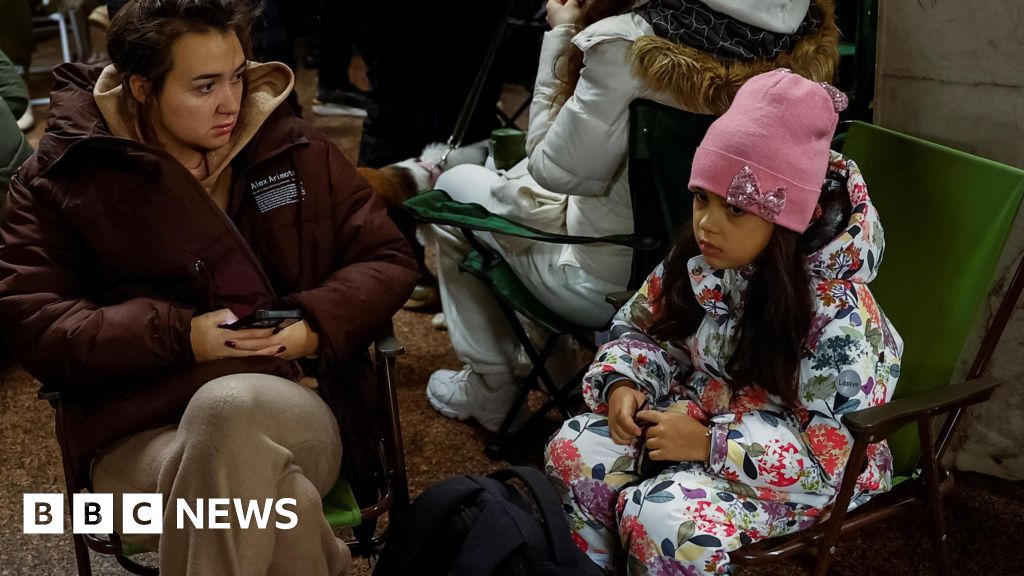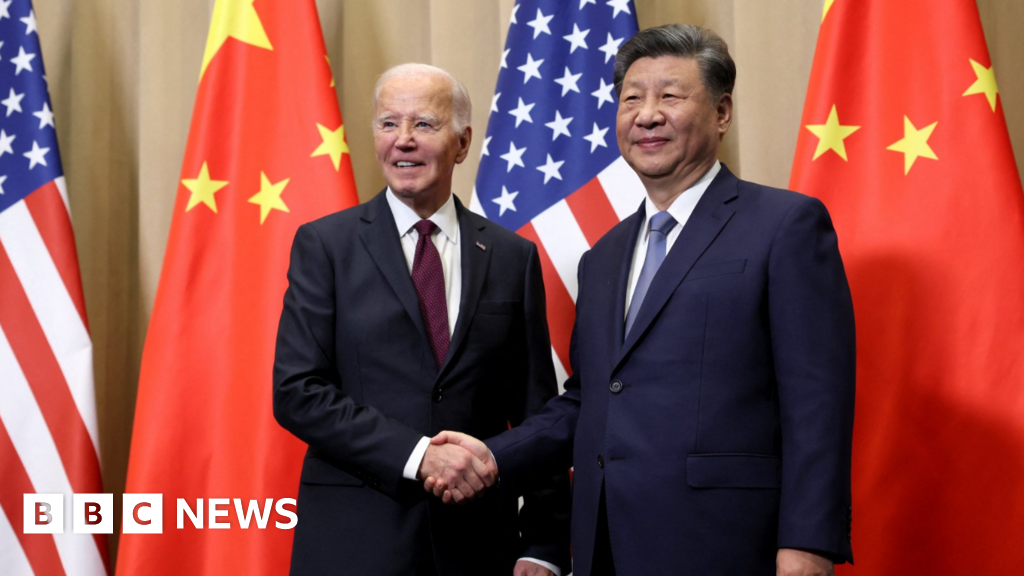ARTICLE AD BOX
By Geeta Pandey
BBC News, Delhi
Image source, Getty Images
Image caption,Uttar Pradesh has 70 million women among its 150 million voters
As the northern Indian state of Uttar Pradesh (UP) votes to elect a new government, there's unprecedented attention on women.
UP has a population larger than Brazil: of its 150 million eligible voters, 70 million are women. And every political party is trying hard to woo them.
The opposition Congress set the ball rolling in October when Priyanka Gandhi, who's leading the party's campaign in the state, said 40% of its poll candidates would be women.
With the slogan of "Ladki hoon, lad sakti hoon (I'm a girl, I can fight)", the Congress has held well-attended marathons and promised job quotas, free bus services, electric scooters and smartphones for women if it wins.
The party's list of female candidates is also eclectic - it includes the mother of a rape survivor, a grassroots worker who was allegedly beaten up by the police, a Muslim activist who was jailed for participating in a protest, an actor and some journalists.
Political analysts say the Congress is a "non-player" with little support on the ground.
But its focus on gender has forced the main contenders - the governing Bharatiya Janata Party (BJP) and their main rival, the regional Samajwadi Party - to announce several schemes for women.
In December, Prime Minister Narendra Modi told a gathering of thousands of women that he was confident that they would re-elect his party since the state government, led by Chief Minister Yogi Adityanath, had provided them security and worked for their empowerment.
Under his party's rule, he said, the state had become a place that was "safe for women and full of opportunities".
But are women really thriving in UP, one of India's poorest states which remains largely patriarchal and feudal?
Congress party leader Priyanka Gandhi has given 40% tickets to female candidates
To put the claim to test, I looked at official data on crime, employment, sex ratio and poverty and spoke to experts and prominent women in the state.
The picture is far from rosy, although there has been some improvement in the past five years.
According to the recently released National Family Health Survey (NFHS5), there have been some positive changes between 2015-2016 and 2019-2021:
- Over 90% households have access to electricity, up from 72.6%
- 68.8% homes have access to toilets compared with 36.4% five years back
- One in two homes is now using clean fuel instead of one in three earlier
- Overall female literacy and the number of women enrolling in higher education have increased
"Our party gives a lot of respect and encouragement to women. Our government has done a lot for women and they are very happy with us," says Geeta Shakya, a BJP MP from the state.
But there is plenty of cause for concern.
The recently-released first-ever multidimensional poverty index (MPI) found that a whopping 44% of the state's 240 million people were deprived of nutrition and that millions of children remained out of school. The state also did poorly in maternal and child mortality and 32% of the population lacked sanitation facilities.
Poverty impacts all genders, but studies show that women are affected more, especially in a patriarchal culture where men have first access to resources.
Why does Uttar Pradesh matter?
- With an estimated 240 million people, UP is India's most populous state. If it were a separate country, it would be the fifth-largest by population in the world, after China, India, the United States and Indonesia - and larger than Pakistan or Brazil
- It sends the largest number of MPs - 80 - to India's parliament and it is often said that the party that wins the state rules the country
- Several prime ministers, including India's first PM Jawaharlal Nehru and current PM Narendra Modi, have won elections from here
Another major cause for concern is the low participation of women in the labour force - a pan-India problem.
Even before the pandemic, only 9.4% of UP's women worked, and official data shows that number fell further in the past two years. Ms Shakya agreed that this was "worrying" and that she would "raise the issue with Mr Modi".
Experts also question the NFHS5 claim that the state's sex ratio has improved. Researcher and activist Sabu George says "alternate official sources like registration of births do not show any improvement until 2018".
During "official inspection" in central and eastern UP districts, he said, he found "many illegal ultrasound clinics operating with impunity" - which means female foeticide remains rampant.
Image source, Getty Images
Image caption,If Uttar Pradesh were a country, it would be the fifth most populous in the world
The biggest concern though is that the state continues to hit the headlines for gruesome crimes against women.
"In 2018, a survey described India as the most dangerous place on Earth for women. And within India, our state is always the worst," says Prof Roop Rekha Verma, the former vice-chancellor of Lucknow university. "If you look at the official data, you'll see that during the BJP rule, cases of violence and rapes have gone up by leaps and bounds."
UP records tens of thousands of violent crimes against women every year - the highest among Indian states.
Police recorded nearly 50,000 crimes against women in UP in 2020, the latest year for which the government released data. It showed that 2,796 women were raped, 9,257 women were kidnapped, 2,302 brides were killed for bringing in insufficient dowries and at least 23 women were doused with acid.
And according to NFHS5, 35% of married women in the state had experienced spousal violence.
Now crimes against women happen everywhere, but some of these cases made global headlines because of what authorities did afterwards.
In 2020, Mr Adityanath's government received global condemnation after the family of a teenager, who had died after alleging gang-rape, accused the authorities of forcibly cremating her body at night without their consent. Top government officials also repeatedly insisted that there had been no rape.
In 2018, a woman who had accused a BJP lawmaker of rape attempted to set herself on fire outside Mr Adityanath's office, alleging police inaction. For months after her complaint, the lawmaker had remained in the BJP and continued to wield influence in the area.
Image source, Getty Images
Image caption,Mr Modi claims that UP has become safe for women under the BJP
And in August, a 24-year-old woman died after setting herself on fire after alleging harassment by police and judiciary at the behest of an opposition MP she had accused of rape.
"A woman cannot go to the police station to lodge a complaint. In rape cases, the government goes into victim shaming and denial," says Sadaf Jafar, an activist who is contesting the elections as a Congress candidate from the state capital, Lucknow. "Women of Uttar Pradesh are surviving because of their grit and with some help from God," she adds.
Prof Verma, who's worked for nearly four decades on gender issues, says when it comes to ill-treatment of women, BJP is not alone.
"Women are treated badly by all political parties, no-one is blameless. I have seen all parties trying to shield powerful criminals, but the other parties cared about public opinion and could be shamed into withdrawing pressure. But this government doesn't care."
Mr Modi saying that women in the state are empowered, she says, "is like rubbing salt into our wounds".
The reason why women's issues rarely become an election agenda, Prof Verma says, is because the vast majority vote on caste and religious considerations.
"Women voters are not a monolith and they do not vote as a group. Women here have very little freedom. They are told who to vote for and they often vote along with the rest of the family."
You might also be interested in:
Delhi Nirbhaya rape death penalty: How the case galvanised India

 2 years ago
31
2 years ago
31








 English (US)
English (US)